lim • i • nal
When does an observation become an artistic creation embodied in a place? When does a place cease to transmute, to be transitional or indeterminate? Can the creation that has been in the landscape for a moment, be perceived as a part of the scenery? Can the architecture be tamed as it is no longer disconnect from the landscape but refer to it? As time lapses, natural and cultural landscapes are constantly being transformed… But how can tranquility be expressed in this ever moving place while carving time and space for contemplation?
It’s from this perspective, that the Orbetello Lagoon embodies liminality: through an ever changing contrast between land and laguna. Fauna and flora converge by the small line segregating the observer from the participant. This place acts as an intermediate between two conditions or regions, allowing a natural transition, giving space and time as one embraces the universal beauty of a shared ecosystem.
Place : Orbetello Lagoon, Italia
Surface : WWF Oasis of Orbetello Reserve
Client : WWF
Phase : International contest
Photos : Othmane Laraki for Marilène Blain-Sabourin, Architecte
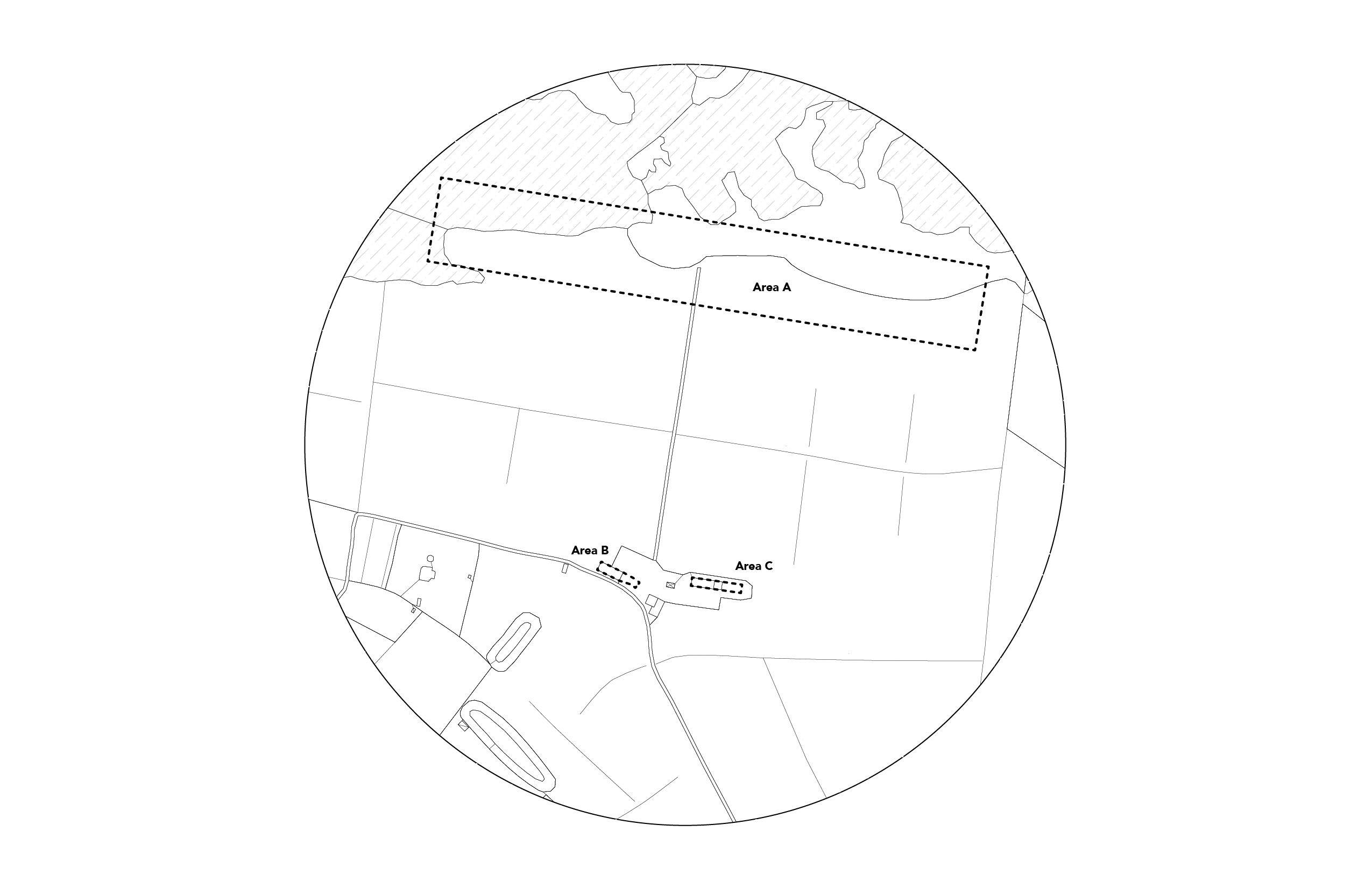
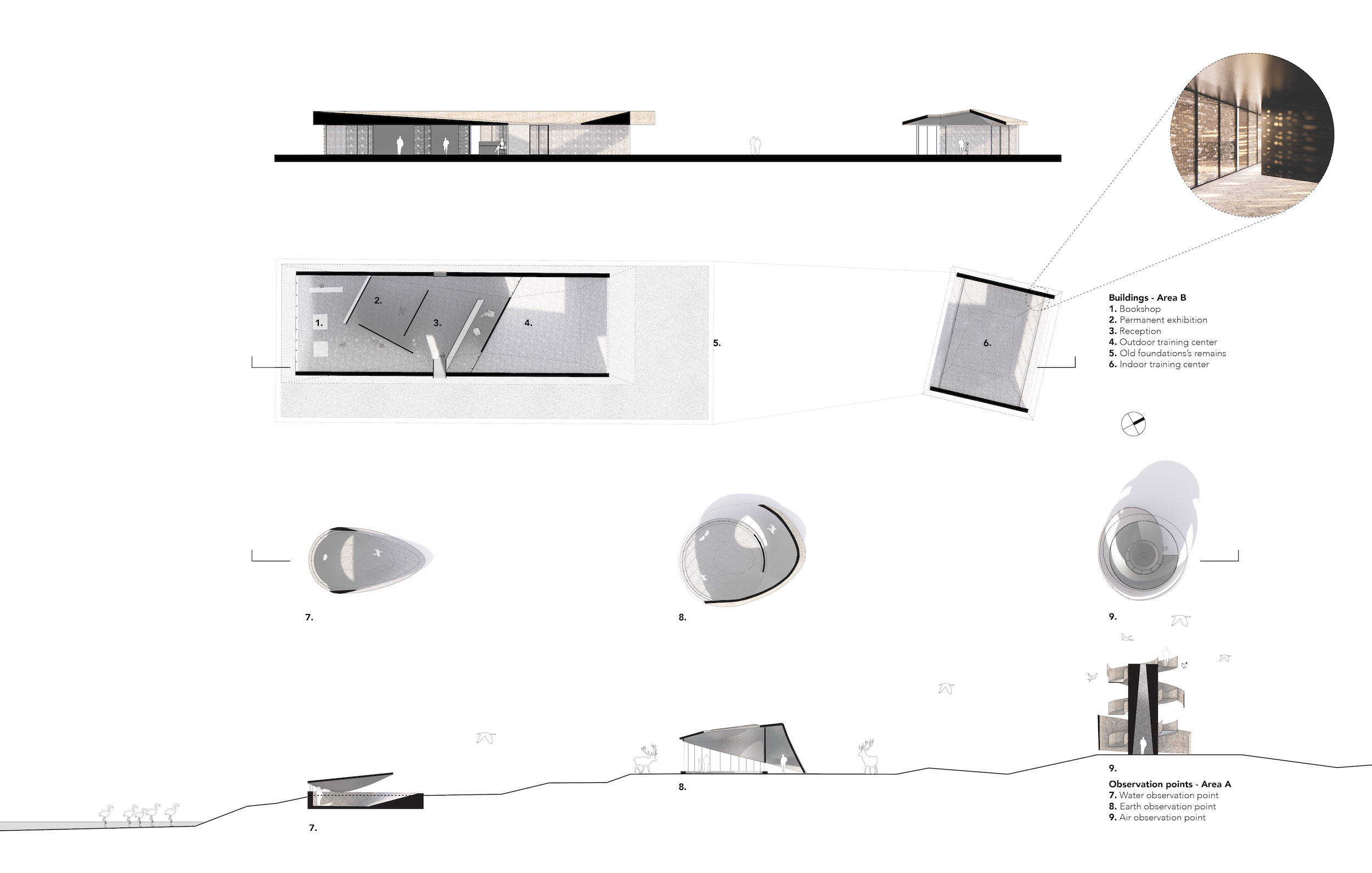


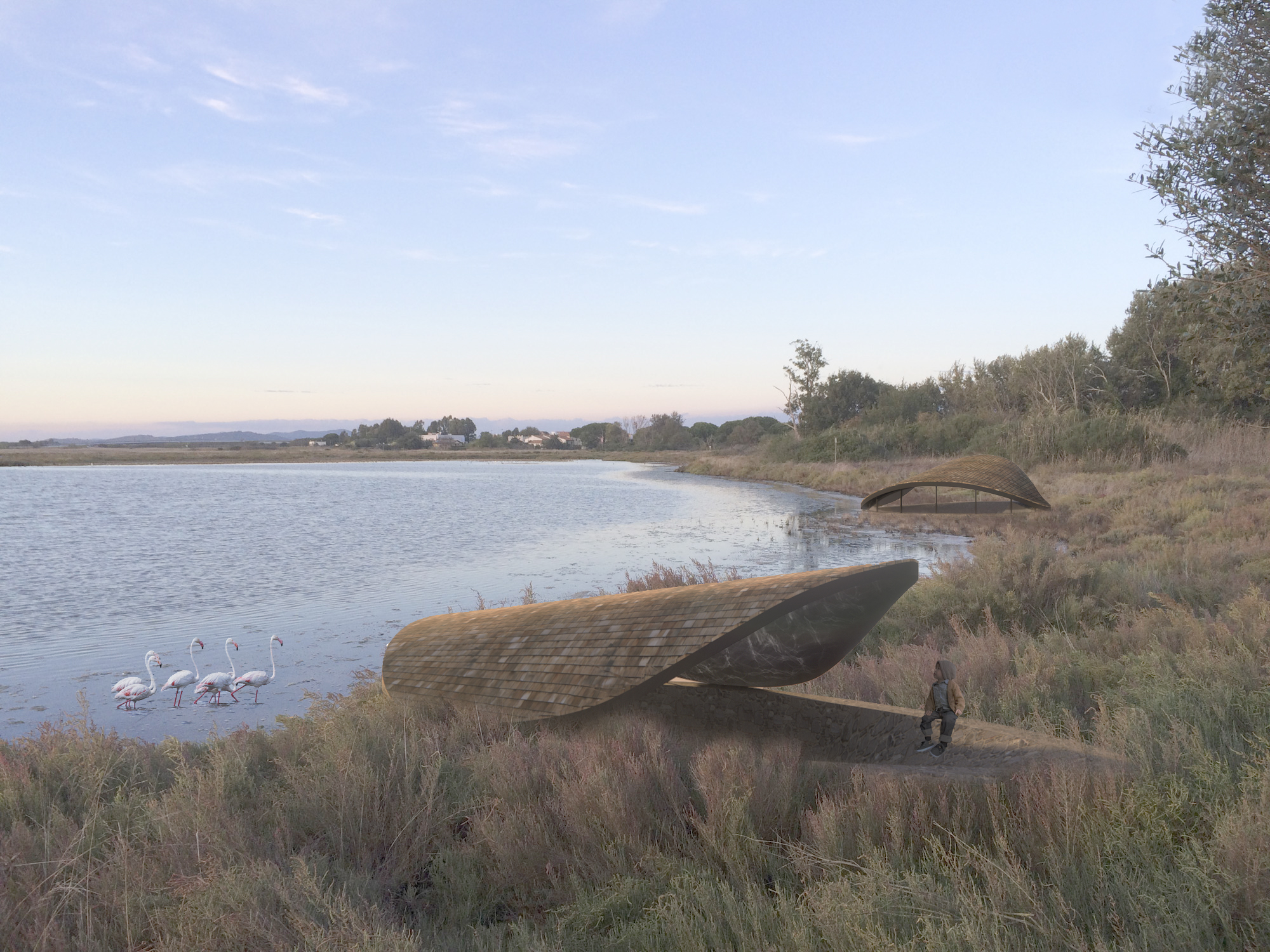

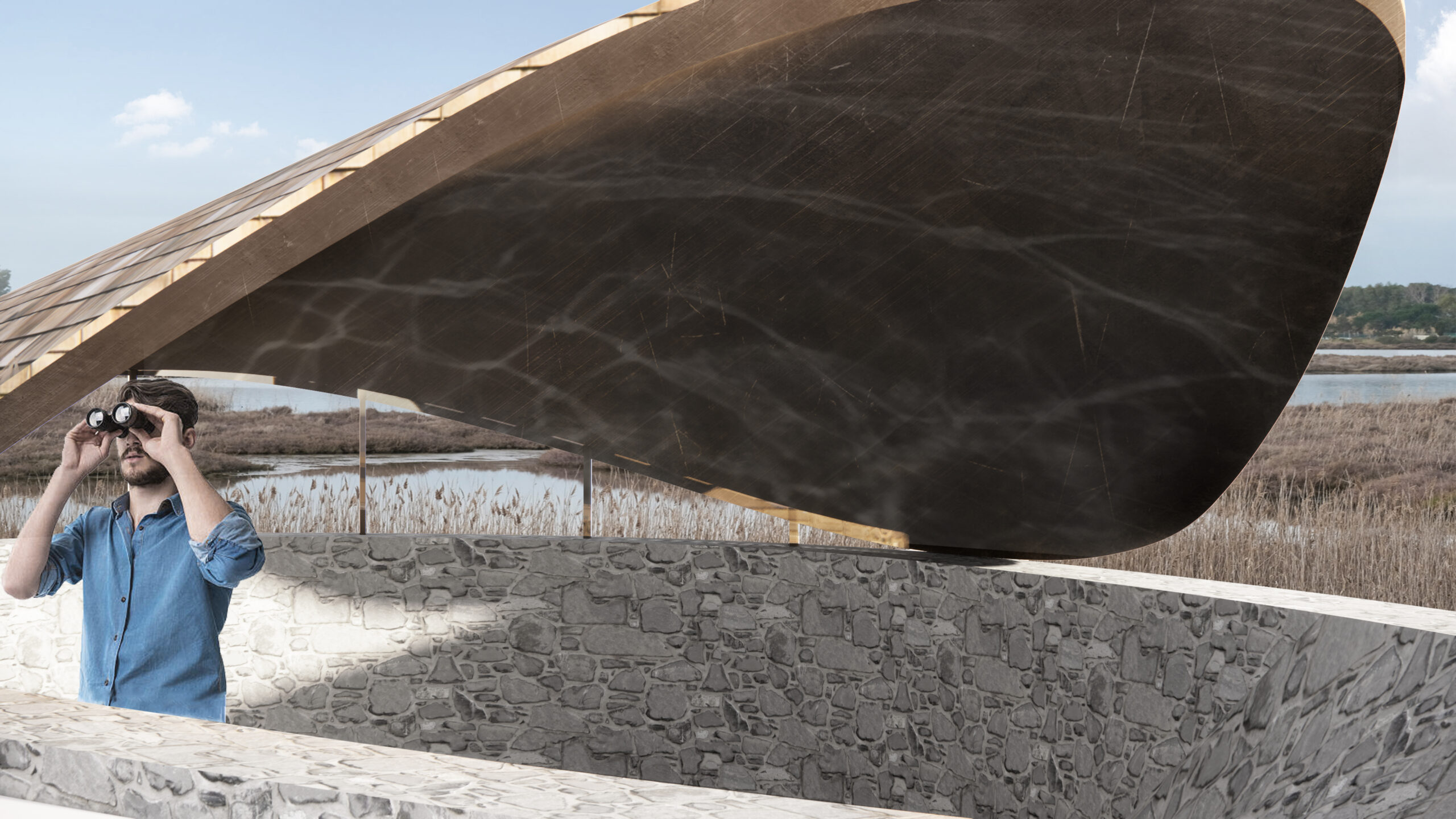
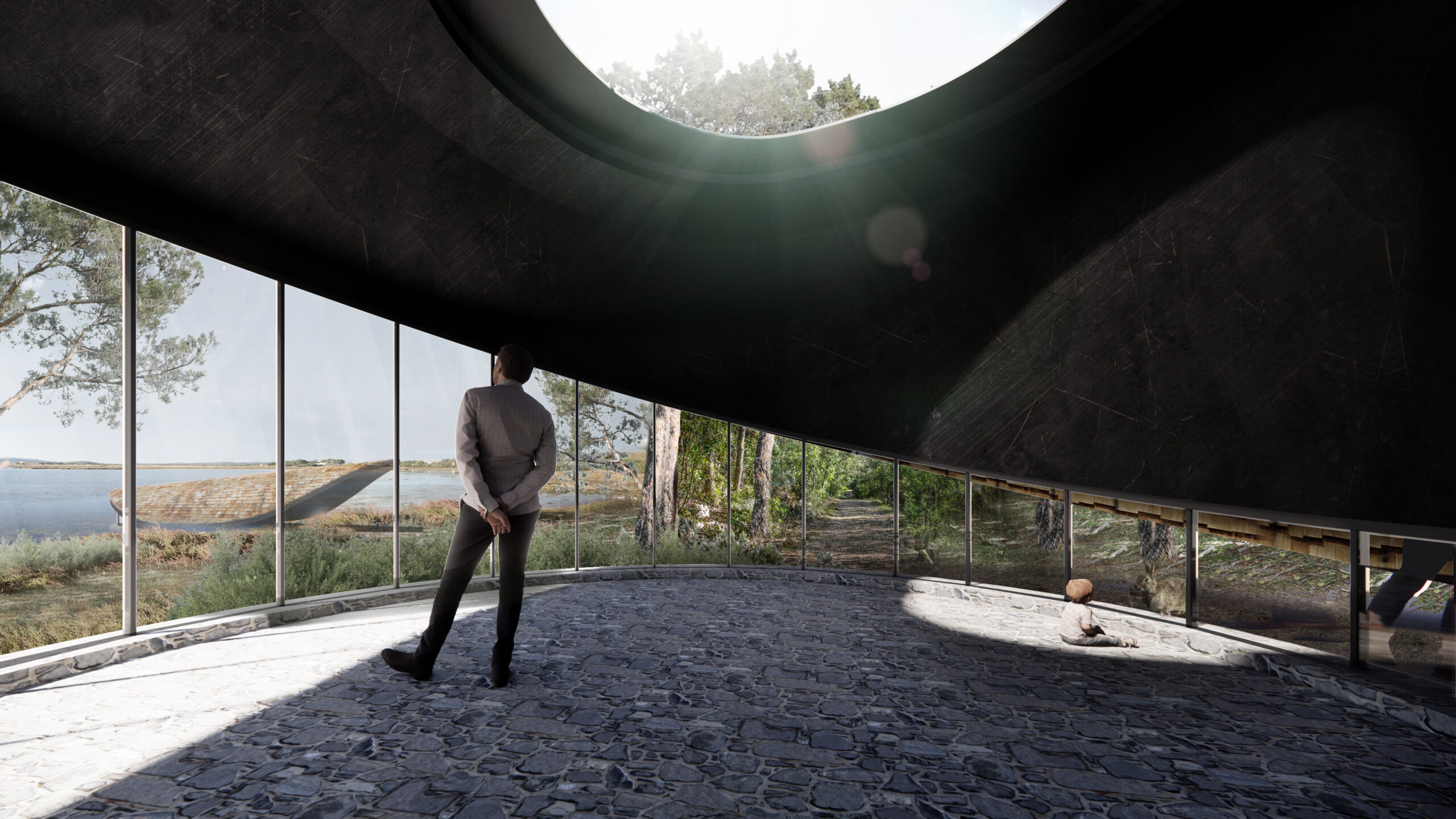
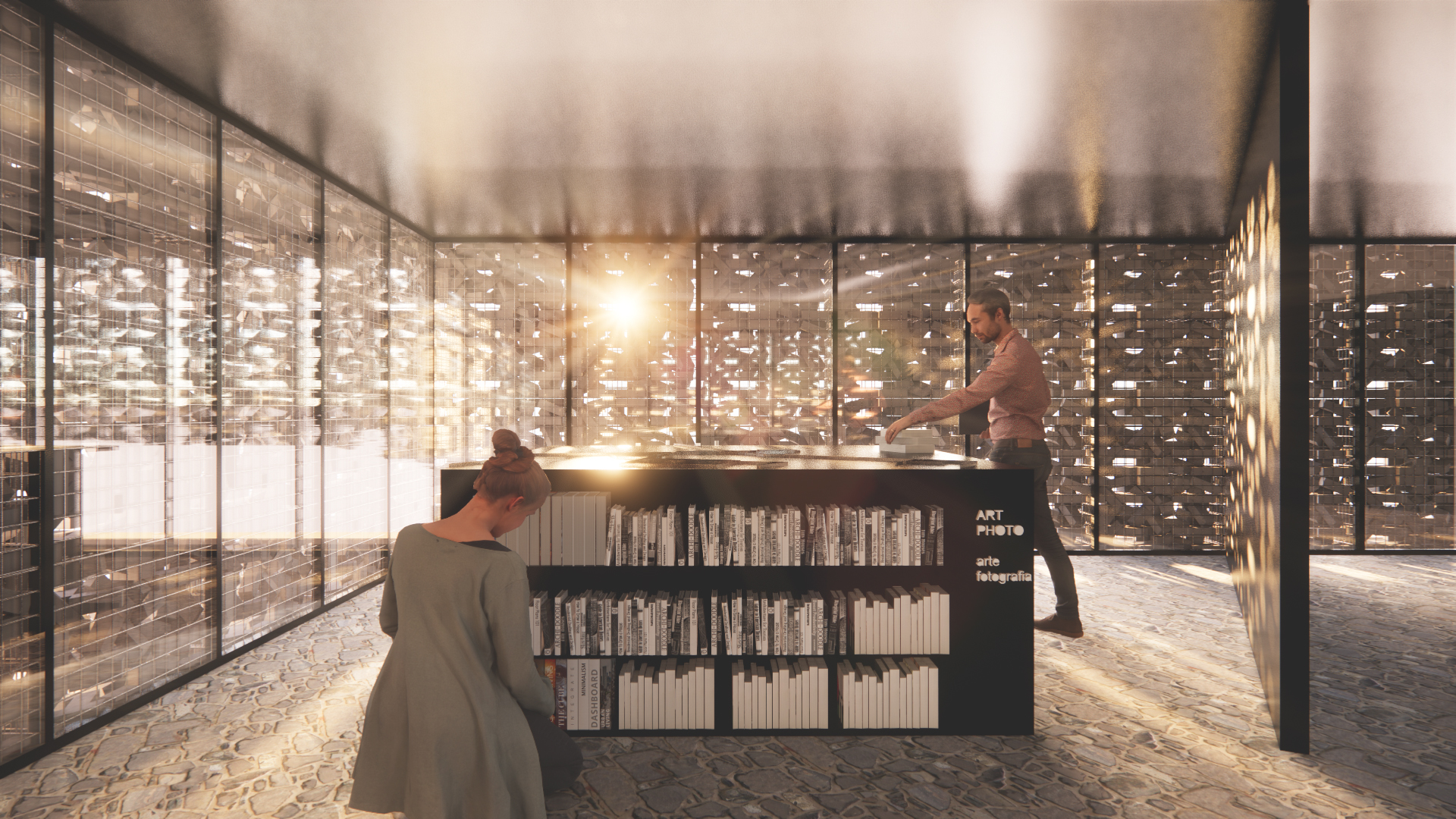
This sanctuary must be conceived in mutual respect with its natural environment. The animals must be free to move and to exist. Architecture becomes the interface allowing this union, this observation and this cohabitation.
The project suggests a new typology of architecture – a ‘bestiary’ per se – that would transform the liminal space into a still, tamed ecosystem and create a unifying experience.
From the cartesian reception volumes expressed in the landscape to more untamed smaller observation points disseminated in the reserve, the Orbetello Lagoon becomes a theater of still introspection rooted in the projection in the environment. These domesticated spaces are personified in their multiple forms and spatial characteristics. They embody a reflection of the very environment in which they were born, while providing places for exhibition, training, contemplation and conservation.
Upon arrival, the visitor is greeted in a space where the light sets the ambience’s place. The formal sobriety of the interpretation center dissolves into an increasingly organic temporality and materiality, inspired by the landscape itself. The building is quietly revealed by generating different atmospheres and emotions, depending on the available light. Theatricality and contemplation allow the visitor to abandon the hectic pace of everyday life to become aware of the subtleties of flora and fauna. The more the visitor moves away from their own reality, the more the tamed architecture is expressed in an organic form and an intimacy between materiality and user.
Progress on the site continues with a route of observation points that enhance sensitivity, contemplation and emotion. On one hand, the air point reveals a sensual and progressive dialogue with nature, offering another point of view on landscapes and skies. The gradual ascension generates opening panoramas or restrictive views, a sensation of tension or expansion. Indeed, the air point aims at provoking constant new perspectives as the visitor walks and looks around.
On the other hand, the water point claims a static and organic discussion with quiet waters. The gradual descent into the earth, grounding the visitors and inviting them to stay still, allows the contemplation of all subtle movements on the water surface. Every moment of contemplation transmutes this natural stillness into a peaceful mind for anybody who aims to accept the beauty of equanimity.
Finally, the earth observation point brings the visitor in its center, through a concentric approach. By following the narrow pathway that leads to the luminous center, the visitor discovers the theatricality of nature. The space creates an intimate tamed and framed environment, where humans can gaze at natural migration without being noticed.
In the end, one leaves the Orbetello with enhanced humanity, a sharper sense of one’s place within mother earth’s species, and a harmonious understanding of one’s environment. Time stands still in this contemplative and ludic territory, where the present is inherited from the past, and lays a solid basis for a future, where species and humans cohabit the liminal place in harmony.